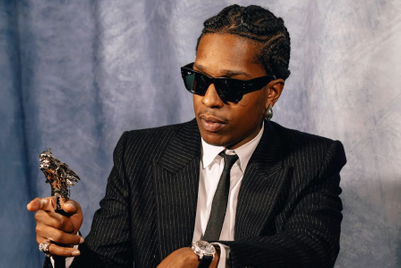
The luxury industry has pursued every opportunity in high-growth markets like Greater China, Japan, Singapore, and South Korea. But it failed to use the same razor-sharp focus to conquer other emerging markets in the region. Take, for example, Vietnam — a country where domestic demand for luxury goods has skyrocketed in the past few years.
The luxury goods market in Vietnam is relatively small compared to China or Japan, with revenue from Vietnam’s personal luxury goods market reaching $976 million in 2021. That market is expected to grow by 6.67 percent annually (CAGR 2021-2025), according to Statista. By contrast, revenue from China’s luxury goods market reached $43.5 billion over 2021.
Vietnam’s figures might appear unexceptional based on per person revenues, which only reached $9.94 in 2021. However, this number doesn’t paint the whole picture.
First, Vietnam has achieved remarkable results since the launch of Đổi Mới in 1986. In only 35 years, the Asian nation went from being one of the poorest countries in the world to a dynamic middle-income economy. Between 2002 and 2020, GDP per capita grew 2.7 times, nearly reaching $2,800. Simultaneously, poverty rates ($1.90 per day) decreased from over 32 percent in 2011 to below 2 percent, according to The World Bank.
In 2020, Vietnam was the top-performing economy in Asia, even beating China. The Vietnamese economy grew by 2.9 percent in 2020, year-on-year, according to government estimates from December. CNBC highlights how this growth positions Vietnam ahead of China, whose economy only expanded by 2.3 percent in 2020.
Furthermore, Vietnam’s middle-class population has expanded massively in the past years. In fact, Nielsen forecasts that it will climb to 95 million by 2030. Additionally, a 2016 report prepared jointly by the Vietnamese government and the World Bank highlighted how Vietnam could reach upper-middle-income status by 2035 with a per capita income of more than $7,000.
Also, Vietnam’s number of High Earners, Not Rich Yet individuals (HENRYs), and ultra-wealthy are growing. Knight Frank estimates that the number of people with a net worth of $1-30 million will balloon by 32 percent to over 25,800 by 2025.
Meanwhile, the country has a relatively young population, with its median age being 32.5 years. And 37.7 percent of the population is urban (36,727,248 people in 2020), according to Worldometer. A young, educated, urban population is the backbone of consumption.
Finally, luxury brands should be bullish on Vietnam because there is high demand for their goods. And this is especially true now that consumers are confined at home and cannot travel to Singapore or Greater China.
“The appetite for luxury goods is more pronounced than ever in the country’s capital, Hanoi, and Ho Chi Minh City,” said Tran Thi Hoai Anh (Tran Anh), founder and president of GlobalLink Co. Ltd to The Business of Fashion. “Only a decade ago, it was all about knowing the difference between Gucci and Prada. [But] today’s new generation of wealthy shoppers are driven by the quest for quality, distinctiveness, and craftsmanship.”
According to Tran Nguyen Thien Huong (Tran Huong), publisher and editor-in-chief of Harper’s Bazaar Vietnam, the country always had a wealthy elite class. But after the American withdrawal from Vietnam, some affluent families “hid their wealth in the form of diamonds and gold.” Tran told BoF that, although Vietnam appeared to be a low-income nation, “there was still an inner wealth.” Then, everything changed in the 1980s, after the adoption of the Đổi Mới as the elite could flaunt their wealth again.
For obvious reasons, the luxury sector benefited from the EU-Vietnam trade agreement and the investment protection agreement in 2019 that removed 99 percent of all tariffs and reduced regulatory barriers. With luxury goods becoming more affordable, more shoppers could purchase them.
At that point, some luxury brands already sensed an opportunity and decided to expand their footprint in the country. Porsche inaugurated Porsche Studio in Hanoi, its second retail space in Southeast Asia. And according to Arthur Willmann, chief executive officer of Porsche Asia Pacific, Vietnam has become one of Porsche’s fastest-growing markets.
Meanwhile, DAFC, which distributes over 60 luxury brands such as Rolex and Cartier, declared its sales in Vietnam were up by 35 percent in 2020, according to VNExpress, and Bulgari returned to the market with the inauguration of its first physical store in HCMC.
Smart retailers have the potential to capture the hearts of the burgeoning consumer class in Vietnam. And brands that understand how to build long-term relationships with their audiences will also learn how to serve them better in the future when they reach peak earning potential.



.jpg&h=334&w=500&q=100&v=20250320&c=1)


.png&h=334&w=500&q=100&v=20250320&c=1)




.png&h=334&w=500&q=100&v=20250320&c=1)




.jpg&h=268&w=401&q=100&v=20250320&c=1)


.png&h=268&w=401&q=100&v=20250320&c=1)
